Application therapy Lyapko in diseases of the organs of vision
1 The Importance of Having Healthy Vision
2 Causes of the development of eye diseases
5 Application therapy Lyapko in diseases of the organs of vision
The Importance of Having Healthy Vision
A person is connected with the world around him through five sense organs that are located outside: nose, tongue, eyes, skin and ears.
The eyes are a very sensitive and important organ, since we receive almost 90% of the information from the environment through vision. Good vision is necessary for a person for any activity, it largely determines the quality of his life, makes it possible to perceive the world in all its variety of colors. Therefore, everyone should understand how important it is to protect and preserve vision.
The eye, which perceives light stimuli, is part of the visual analyzer, which includes the optic nerve, visual centers located in the cerebral cortex. The visual cortex is the part of the cerebral cortex responsible for processing visual information. Basically, it is concentrated in the occipital lobe of each of the cerebral hemispheres. Thus, the "true" eye is located in the cranial center responsible for vision, that is, in the central nervous system.
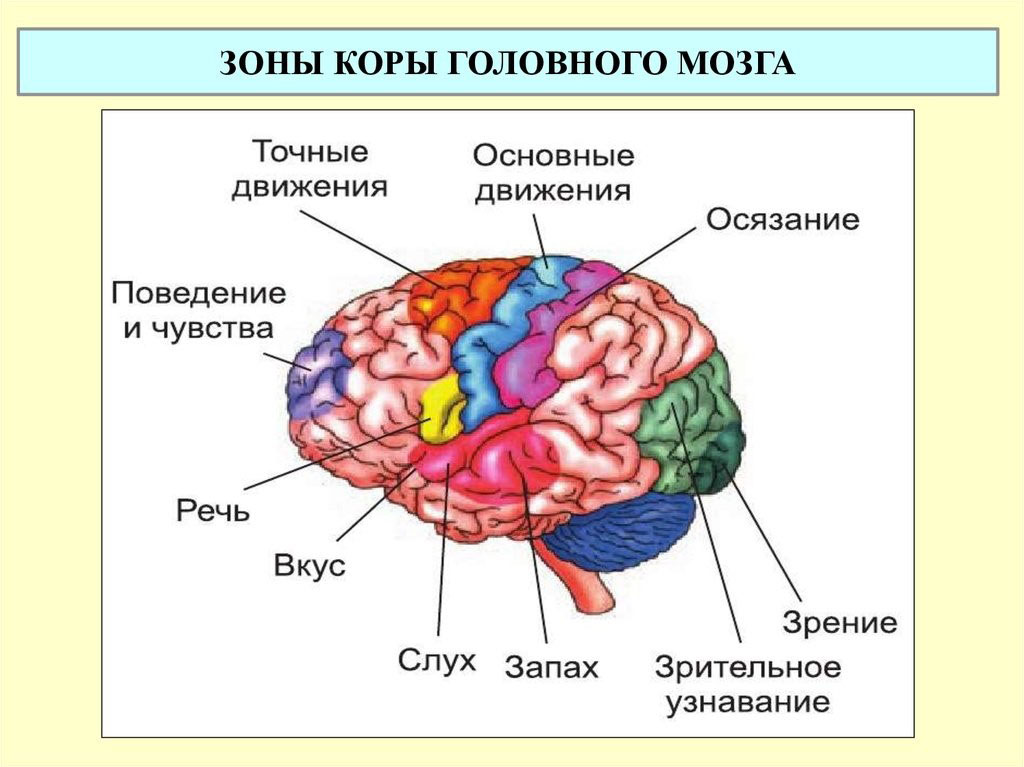
Causes of the development of eye diseases
Causes that lead to visual impairment can be congenital or acquired. Visual impairment is not only a decrease in visual acuity, but also a distortion of its image, the presence of dark spots in front of the eyes, etc.
- Ocular circulatory disorders. The occurrence of insufficient blood supply contributes to the habit of reading in the supine position.
- Dryness of the surface of the eyeball - a focused look at the screen of a monitor or smartphone, prolonged reading of books causes a decrease in the frequency of blinking, which causes dryness of the eye membrane.
- Pathology of the retina after trauma, viral diseases, hereditary predisposition, aging of the body.
- Prolonged eye strain due to improper lighting when working at a computer, while reading.
- Weakness of the muscles that change the curvature of the lens. Occurs when working with small details for a long time, watching television for a long time or working on a computer.
- Non-compliance with the regime of work and rest, overwork of the eyes.
- Stress conditions and insomnia.
- Concomitant diseases and their complications, in which eye pathology can develop:
- diabetes;
- heart attack and stroke;
- migraine;
- hypertonic disease;
- transferred viral diseases, etc.
As a result of complications, the retina and optic nerve suffer, which can lead to a permanent deterioration in vision and threaten its complete loss. If the patient has an existing eye pathology (cataract, glaucoma), hyperopia and myopia, the likelihood of further complications increases.
List of some eye diseases
Sometimes there is a temporary deterioration in vision, but its causes are not in eye disease, but due to constant stress, overwork, lack of sleep. With severe stress, this condition can last for weeks, with the onset of headaches, ticking of the eyelids. Such problems require treatment, as they can lead to serious health problems.
Myopia (myopia) is a violation of the refraction of the eye, in which a person sees distant objects poorly, resulting in discomfort, eye fatigue, pressing pain in the temples or forehead. With myopia, the image is fixed in front of the retina.
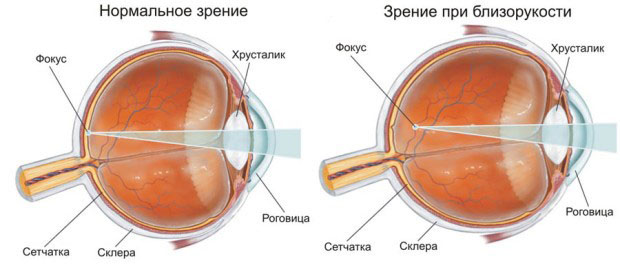
Farsightedness (hypermetropia) - a refractive error in the eyes, in which the image is read behind the retina, is the opposite of myopia. It is difficult to see both near and far objects, often there is a nebula before the eyes.
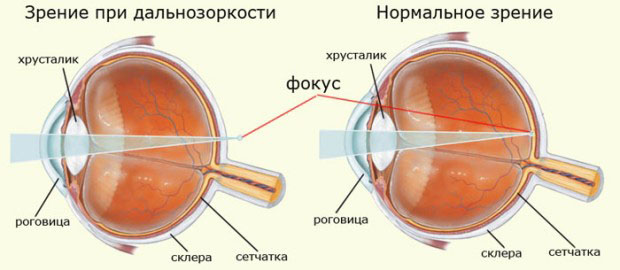
Glaucoma is a chronic disease in which, due to increased pressure inside the eye, dysfunction of the optic nerve occurs. As a result, vision falls, which may disappear in the future. The disease proceeds quickly, therefore, if there is a violation of lateral vision, black spots, “nebula” of the image, the inability to distinguish objects in the dark, etc., you should definitely consult a doctor
A cataract is a gradual clouding of the lens of one or both eyes. The main category of patients is the elderly. This disease can reduce vision in a very short time, up to blindness. In young people, cataracts are possible due to injuries, diseases of the somatic type.
Retinal angiopathy - destruction of the structure of the choroid in the eyes. It can be caused by eye injuries, high intraocular pressure, impaired functioning of the central nervous system, diseases of the circulatory system (arterial hypertension), etc. It is characterized by a noticeable decrease in vision, blurred vision, etc., up to loss of vision.
Retinal dystrophy is a dangerous disease with various causes. With the untimely provision of qualified assistance, the tissue of the retina of the eye dies or decreases.
Prevention
To maintain good vision throughout life, you must follow a number of simple rules:
- The duration of a night's sleep is 7-8 hours, which gives the eyes a good rest and recovery.
- Physical activity, playing sports, walking in the fresh air, limiting stress, hypothermia, injuries and other harmful factors that can lead to visual impairment.
- Nutrition with a high content of vitamins and microelements useful for vision, exclusion of bad habits.
- Watch your posture: the curvature of the cervical spine can cause pinching of the nerves, which leads to visual disturbances.
- Prevention of stagnant processes in the cervical and thoracic spine. To do this, those working at the computer, as well as in a forced sitting position, need to take breaks every hour and knead the eye muscles, massage the cervical spine, get up periodically, and take short walks.
- A daily full-fledged set of exercises, and every 40 minutes, especially for schoolchildren, perform light gymnastics for the eyes after each lesson or at least 2 times a day. Exercises are especially effective for "false myopia", since the process is reversible here. There are many techniques with which you can not only train the eye muscles, but also learn how to relax them.
- Place objects of work or a book at a distance of at least 35-40 cm from the eyes, proper lighting of the workplace. The distance from the computer monitor to the face should be at least 0.4-0.6 m, to the TV - 2-3 m.
- Those who work at the computer 8 hours a day should definitely drink 1 glass of water per hour (in small sips), as the monitor dries out the eye shell.
- Do not read in a moving vehicle.
- Prevention and treatment of diseases of the body that lead to dysfunction of the eyes.
- Limitation of stress, hypothermia, trauma and other harmful factors that can lead to visual impairment.
- Constantly control your thoughts and emotions, avoid negativity in your life. As psychologists say: "Think before you think." Almost all eye diseases reflect a person's unwillingness to see something or someone: events, relationships, himself, the people around him. Such people can often be heard in a conversation: “I don’t want to see him!”, “My eyes would not have seen this!”. That's what you won't see.
- Deep internal relaxation, autogenic training, yoga helps well. There is a special breathing exercise for the eyes: “breathe” with the eyes. You need to imagine that you are breathing in and out through your eyes. This breath cleans the energy channels of the eyes well.
Application therapy Lyapko in diseases of the organs of vision
Lyapko's applicators in various modifications (plates, rollers, applique belts, applique tapes) are an original, powerful device with many health-improving therapeutic possibilities.
Their action is based on the principles of traditional Chinese medicine - superficial multi-needle acupuncture, as well as on the general physiological mechanisms of life.
More detailed information can be obtained in the article "Lyapko applicators - mechanisms of action and application zones".

Lyapko application devices are one of the methods of reflexology and can be considered as an independent section of physiotherapy treatment.
Lyapko application therapy refers to non-drug methods of treatment, combined with all types of medical and physiotherapeutic treatment. The ease of use of Lyapko's application devices, their safety allows you to take such procedures at home.
It is widely used for the prevention and in the complex treatment of many diseases, including those in which eye pathology can develop: diabetes mellitus, stroke, headache, hypertension, osteochondrosis of the cervical spine, past viral diseases, sleep disorders, etc.
Application areas for visual impairment (Fig. 1):
- main 2, 3;
- auxiliary 1, 4, 12, 13;
- additional 20, 22, 28, 31.
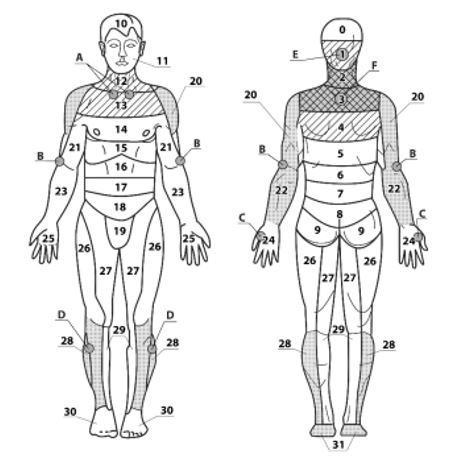
Fig.1
Variants of applicators for the cervical-collar zone (main and auxiliary zones).
The applicator "Chamomile M", "Quadro", "Chance", "Folk", "Needle Massage Cushion", "Sputnik" is used in the supine position on zones 1, 2, 3 or 2, 3, 4. For uniform pressing, it is necessary to use rollers or folded towel. Exposure time 20 -30 minutes.

Belt "Baby", "Universal M", "Magic tape" Health "1 cavity 3-5 segment is wrapped around the neck, head, which allows you to capture zones 1,2,12.
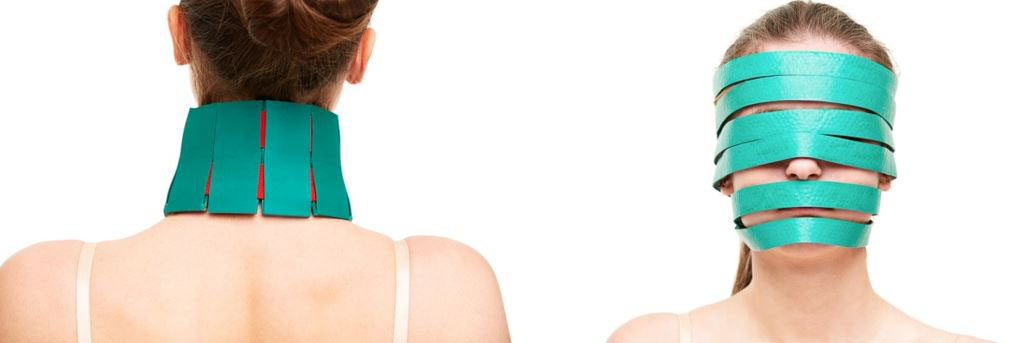
Running in with the “Large Roller M”, “Universal Roller M”, “Facial Roller M”, “Needle Ball” of the head, face, neck-collar area during the day is a means of preventing congestive processes in the cervical and thoracic spine.
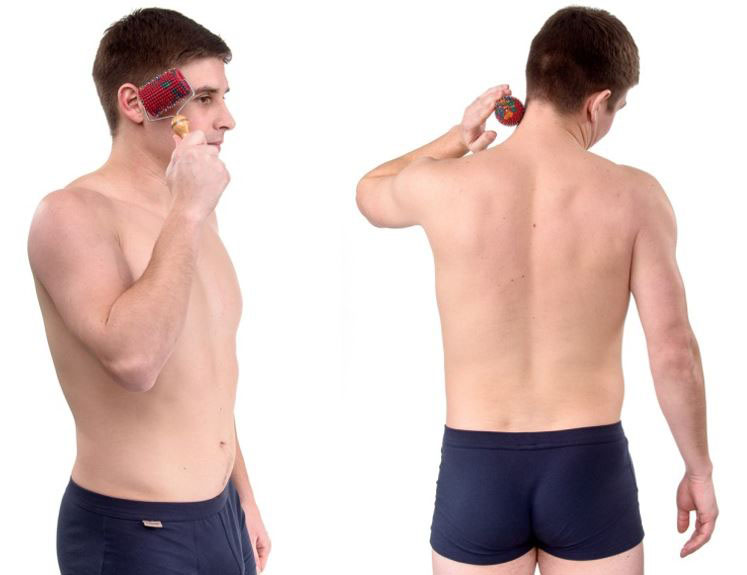
You also need to work on additional zones on the arms and legs. The exposure time is 7-10-15 minutes, the sensations should be pleasant.
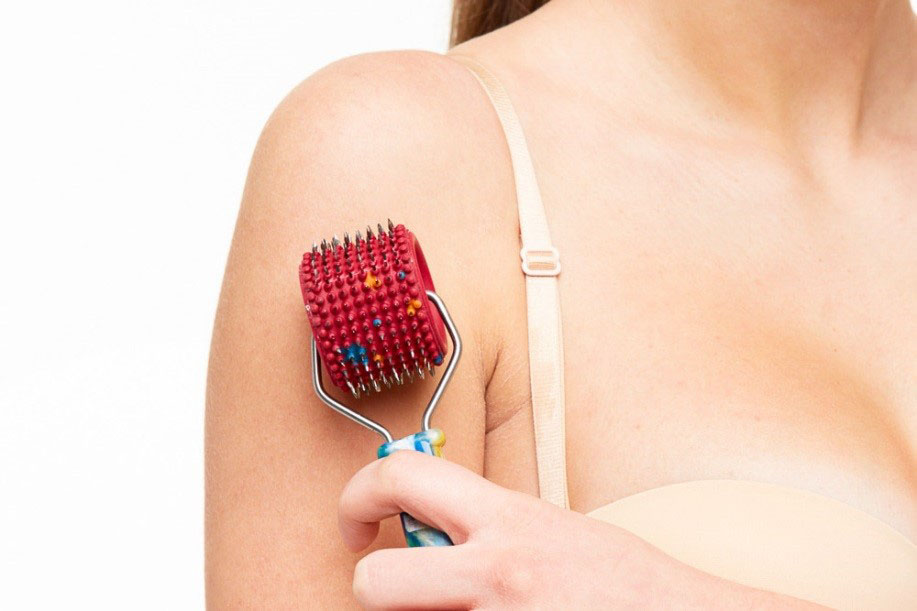
A good relaxing effect is given by massage of the head, neck and collar zone when using the massager "Pharaoh", "Pharaoh L".
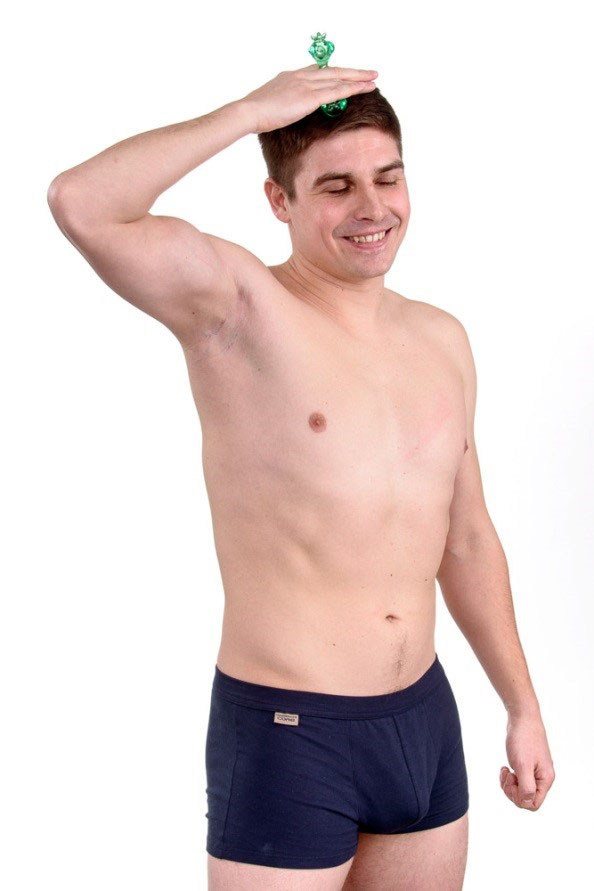
It is better to end the session by exposing the feet using the Insole Plus applicator, the exposure time is 15-20 minutes.
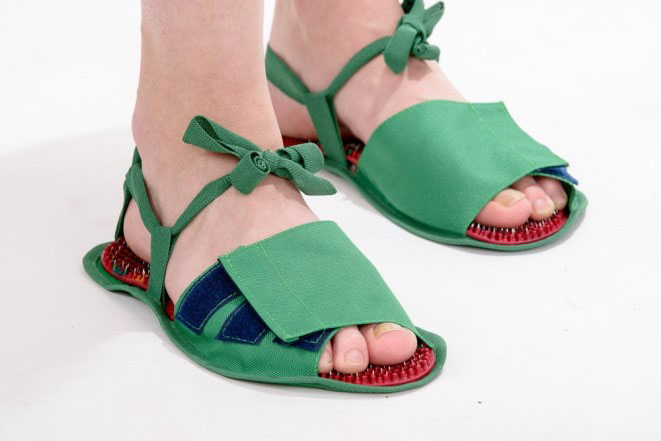
Especially for the prevention and treatment of eye diseases, the applicator "Belt Universal M" was created.
A distinctive feature of this applicator is its original structure. The applicator plates have special notches (cuts) that provide soft and uniform pressure on sensitive reflex zones around the eyes, mouth and ears, and other areas of the face.
The pressing force of the applicator plates can be controlled using adjustable belts, the sensation should be pleasant and comfortable.
Before fixing the belt on the eye area, you need to attach it with the back side (needles out) to the application area, adjust the adjustable belts to the volume of the head and only then gently attach the needle side to the eye area, then to the back of the head and snap the fasteners.
Reviews of doctors about Lyapko's application therapy can be read in the article: "The experience of using the application belt "Universal M" Lyapko in ophthalmology."
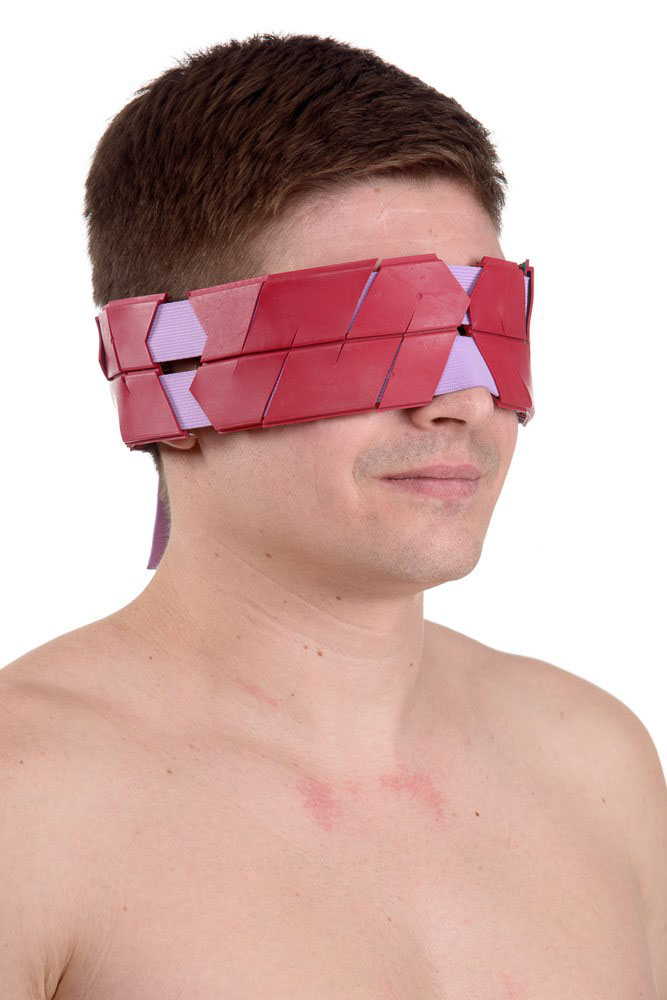
"Belt Universal M" provides a healing effect on the organs of vision and the area around the eyes: it relaxes the muscles of the eyeball, relieves eye strain, restores the accommodative functions of the lens, elasticity and firmness of the muscles, relaxing and exercising them.
Recommended for the preservation and improvement of vision, as well as for the treatment and prevention of myopia, age-related (presbyopia) and congenital farsightedness (mild and moderate), spasm of accommodation (pseudomyopia), in the complex treatment of glaucoma, cataracts, visual fatigue (asthenopia), visual atrophy nerves, diabetic retinopathy. It prevents computer syndrome. It is indicated for relieving symptoms caused by increased eye strain (pain, pain in the eyes, irritation, dryness).
Additional clamps of different intensity with fingers on the application area around the eyes and eyeballs, temples and neck area enhance the effect of application therapy. Simultaneous impact on the back of the head of an additional plate improves cerebral circulation, relieves spasm of cerebral vessels.
The therapeutic effect increases if acted through a gauze pad folded in 1-3 layers and moistened with ordinary or sea water, saline or herbal decoction.
In children's practice, the use of the Lyapko applicator "Belt Universal M" on the eye area is recommended under the supervision of adults from the age of 5. It is indicated in the complex treatment of mild and moderate amblyopia.
Applications are recommended to be carried out on closed eyes 1-2 times a day, the exposure time is 10-15 minutes, for a more relaxing effect, it is advisable to take the procedure in the supine position.
The course of application is 7-10 days, repeat after 10-12 days.
